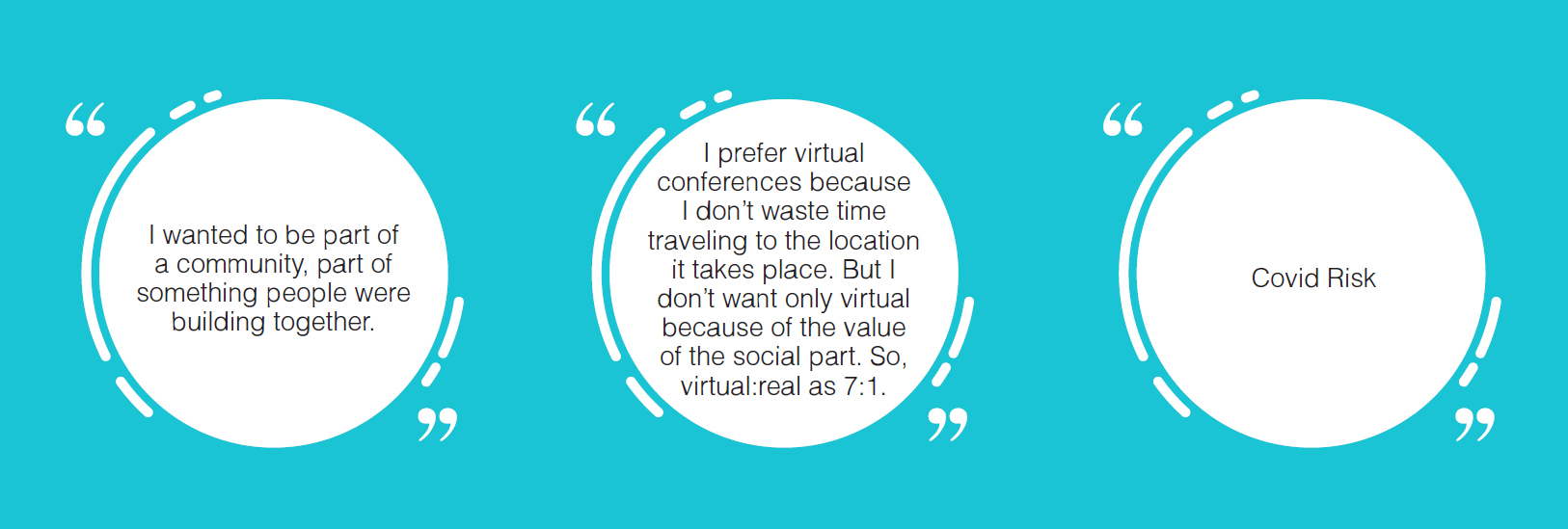In the survey of our magazine in which doctors were asked to list their choices regarding virtual vs. in-person meetings,… In a world of conflicting schedules, we tend to rely on virtual meetings rather than in-person interactions. During the pandemic, the major reason for the explosion of virtual meetings was the travel shutdown for events and the fear of contagion in group gatherings.
2021 has been a year that took off with an unprecedented pandemic, leading to a number of transformations, including how events were conducted. The lockdown that followed, and is currently still in place, gave the world the time and opportunity to move to virtual events in place of physical ones. The survey of the Ophthalmology Life Magazine regarding virtual events in ophthalmology was conducted with 1,500 ophthalmologists all over the world. The important thing was to identify the appropriate type of meeting given the situation. The way two parties choose to collaborate, namely in person or via virtual meetings, has a major effect on how productive the engagement is.
In a recent Harvard Business Review article, the author outlines some of the benefits of virtual meetings, such as solving specific problems, time problems, distance problems, and deadline problems. All of these benefits lend themselves to meetings centered around quickly finding solutions to solve project problems that are specific and small in nature but might have a large impact on the overall process. The ability to connect with people from all parts of the world with the click of a button has revolutionized how companies do business, but not without its own shortcomings. The main issue with virtual meetings is that they can be less productive when it comes to discussion and collaboration due to the flow of conversations being significantly different from face-to-face conversations. Digital meetings are less fluid and free and rather rigid and systematic. Strategically making use of the different types of meetings can have large impacts on the overall productivity of the project.


The Benefits of Face-to-Face Events
Meetings take people to a more focused environment with fewer distractions. As long as attendees are informed, entertained, and fed, event hosts can keep them engaged for days.
• Relationship building
• Shared context
• Access to nonverbal cues, like expressions and body language
• Increased effectiveness and engagement (compared to asynchronous communication)
The downsides of face-to-face events
• Limited length of interaction
• Deeper knowledge-sharing is siloed to small groups
• Travel time and costs
• Disruptive in nature
• Manual post-workshop documentation
• Limited number of attendees
The Benefits of Virtual Meetings
Virtual events of all types have seen explosive growth due to the travel restrictions imposed because of the pandemic. During this time, we see a lot of innovation as people of all ages and backgrounds get used to these formats. Many best practices are being worked out during this time. When F2F events reemerge after the pandemic passes, it is likely that virtual events will still have a substantially larger market share in how people will meet.
• Lower cost
• Lower environmental impact
• Speed
• Easy recording and online distribution
• Greater and more international attendance
• Better metrics
• Free from Covid-19 contagion
Hybrid Events
Hybrid events can be the best of both worlds. All the costs and efforts put into bringing speakers and attendees together in the same place for a live event can be spread out to a much larger audience at comparatively not much additional cost. It is likely that a hybrid format will become a significant part of many events. Until there is a widely dispersed, effective COVID-19 treatment or vaccine, there will be many people that are unwilling to attend events for lack of travel funds and/or a fear of contagion to themselves or loved ones. A hybrid component can fill a need for these individuals.








